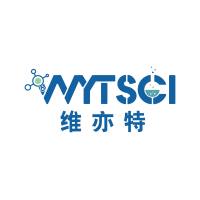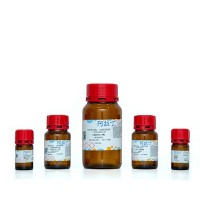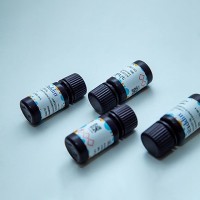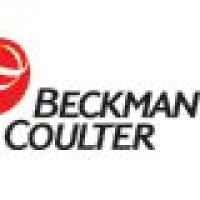Cyanine Dye Purification Protocol
互联网
<center> <center> <h1> <font> </font><font> </font></h1> </center> </center>
Preparation of salt buffers
-
The buffers are used for both HPLC purification and Sep-Pak purification.
- 1M triethylammonium acetate, pH 8.0
- 10% acetonitrile
- 25mM triethylammonium acetate, pH 8.0
- 10% acetonitrile (this is 40-fold dilution of HSB + 10% acetonitrile)
HSB, 800 mL
-
- To 500mL ddH2 O , add approx. 25-30 mL glacial acetic acid
- Slowly add 111.3 mL (80.95 g) HPLC grade triethylamine; the reaction is exothermic; the solution will become cloudy � wait until it clears before adding more)
- Add dropwise an additional 10-15 mL acetic acid to adjust the pH to 8.0 .
- Add 80 mL acetonitrile (HPLC grade)
- Adjust the final volume to 800 mL with ddH2 O.
LSB, 1000 mL
-
- To 25 mL HSB , add 100 mL HPLC grade acetonitrile
- Raise final volume to 1L with ddH2 O
Desalting the sample for Sep-Pack Purification
Materials:
- HPLC grade acetonitrile (a set of three runs consumes around 40 mL)
- 20 ml ddH2 O, 0.22 mm filtered
- 15 mM TEAA (this can be substitutied with 0.750 mL HSB and 49.25 mL ddH2 O, 0.22 mm filtered, to produce 50 mL)
- Sep-Pak cartridges, C18 (Waters #20515); 1 column per cy dye. Can be reused twice.
- 12 mL syringe (1 per dye)
Pre-load protocol:
- Wash Sep-Pak with 10 mL of acetonitrile.
- Wash with 5 mL of water.
- Wash with 10 mL of 15 mM TEAA.
Sample Preparation, Loading, and Elution:
- The column may be loaded up to 150 A260 units of sample (based on the A260 reading for both labeled and unlabeled dNTPs in the filtrate), lyophilized down to 3-5 mL (volumes of 6.5-7.5 provided reasonable yields, and volumes of u p to 10 mL have been successful, but with lower yields).
- Add 1 M TEAA to the sample, to a concentration of 15 mM.
- Load the sample onto the column. The dye should be visible near the top of the column. Wash the column with 5 mL of 15 mM TEAA.
- Elute with 3 mL of acetonitrile. Discard the initial colorless drops, collect the colored eluent into a 2 mL centrifuge tube, and discard the remaining solution. The collected volume will be approximately 1.0-2.0 mL. Some colored material will rema in on the column after elution.
Immediately wash (pre-load protocol) and process any subsequent lots, reusing the column only twice for each lot. If the column is allowed to sit for more than 5 minutes, yields may decrease 5-10% or more. Avoid reusing the column more than two times (a total of three uses), as yields may begin to diminish. Pool the lots together, check UV absorbance, and calculate yield. Expected yields for this stage are 70-80% for either Cy dye.
- Lyophilize the entire Sep-Pak purified material, keeping the dyes separate (see Lyophilization and Redilution section ). Resuspend with a small volume (200-500 ml) of 0.2 M TEAA.
- Centrifuge the sample through a 0.45 mm filter.
- Check the absorbance at 260 nm and, if necessary, dilute the sample down to a concentration that will not exceed the capacity of the column (Dionex NucleoPac™ 9 ´ 250 PA-100; P/N 43011 (anion exchange) column listed bel ow). Typically a 1 ml injection loop is used to inject a 10 mM sample of unlabeled dNTPs + Cy-dUTP.
HPLC Purification
Column used: Dionex NucleoPac™ 9 ´ 250 PA-100; P/N 43011 (anion exchange)HPLC Equipment: Perkins Elmer Series 200 LC Pump, Perkins Elmer UV/Vis Detector LC 295
1. Equilibrate column in buffer system, 3 mL/min flow rate (general purge method)
1.1. 5 min low salt buffer (LSB) or A1.2. 2 min gradient to 100% high salt buffer (HSB) or B
1.3. 5 min HSB or B
1.4. 2 min gradient to 60% LSB or A
1.5. 5 min 60% LSB or A
2. Load sample into injection loop. See "Final Considerations" on the next page for sample lot size and other issues.
3. Run gradient (3 mL/min flow, chart recorder 0.5 cm/min)
3.1. 5 min 60% LSB, 40% HSB3.2. 10 min gradient to 80% HSB
3.3. 1 min gradient to 100% HSB
3.4. 10 min 100% HSB
3.5. 1 min gradient to 60% LSB
3.6. 5 min 60% LSB
Final Preparative Procedures
For a preparative run of 150 nmoles Cy-dUTP (note "Final Considerations"), the recovered fractions of purified Cy-dUTP is eluted in 5 ml of volatile TEAA buffer that can be removed by lyophilization. ( Return to HPLC Preparation.)- Pool fractions of each Cy dye into a 50 mL conical tube. Punch holes into the cap using an 18-gauge needle. Avoid exceeding more than half the volume of the tube, as the samples may have a tendency to splatter during degassing or travel up the tube during lyophilization.
- Freeze the samples on dry ice and transfer them to a lyophilization chamber. Wrap the chamber with foil to protect the samples from light.
-
Lyophilize the samples to completion (approx. 12-15 hrs for HPLC-purified samples, 6-10 hrs for Sep-Pak-purified material). HPLC-purified samples will have the appearance of a residue until most of the TEAA is removed.
Note: Steps 4 & 5 are for HPLC-purified samples only.
- Dilute the samples back up to 8-10 mL with 0.22 mm filtered ddH2 O and lyophilize until the samples again resemble residue. This time, it may require up to 24 hours of lyophilization.
- Repeat Step 4. Lyophilization is complete when the sample has the appearance of a film and/or specks of solid residue. Resuspend the sample in a small volume of 10 mM phosphate buffer, pH 7.0. Bear in mind that some of the Cy-dUTP will coat the upp er regions of the tube walls and may not be readily visible. Check absorbance of the sample. A560/660 /A260 ratios should be around 17 for cy 3 and 25 for cy 5.
Expected overall yields: cy 3: 50-70%; cy 5: 45-65%.
Final Considerations
Currently 150nmol of Cy-dUTP contained in a 10 mM mixture of labeled and unlabeled dNTPs is loaded onto the column listed above, depending on the contents and concentration of the filtrate; PCR flow-through samples tend to be cleaner and may allow for larger injection lots. Thus, the flow-through from PCR and RT reactions may be kept separate so that they can be processed separately. The Sep-Pak purification desalts the sample and is likely to remove other impurities present in the sample. HPLC purif ication can still be performed without Sep-Pak purification, but salt content prohibits injection of more than 50nmol. Furthermore, yields tend to be lower if the sample is not desalted prior to HPLC injection.









